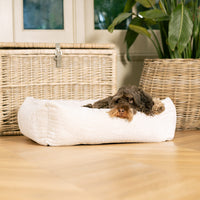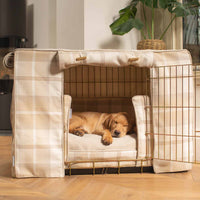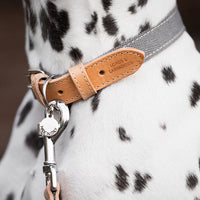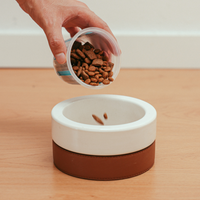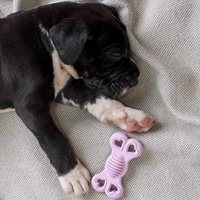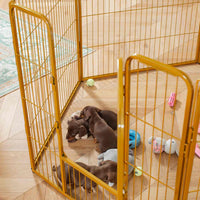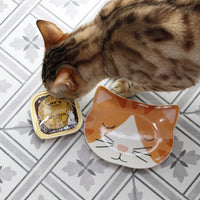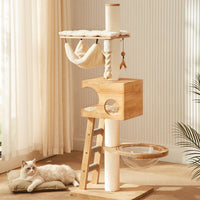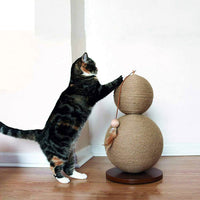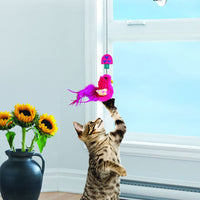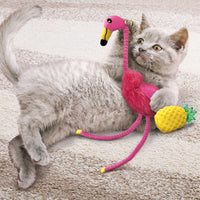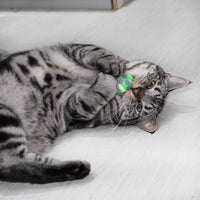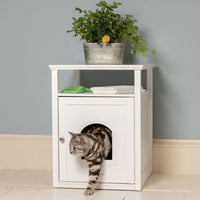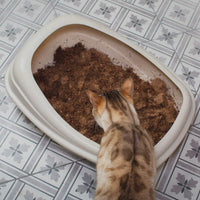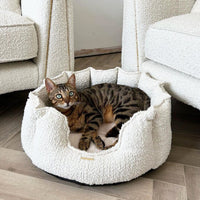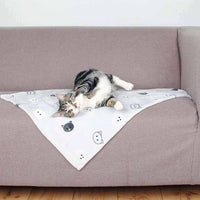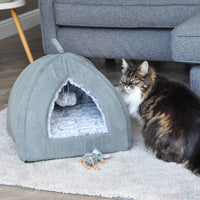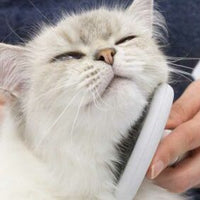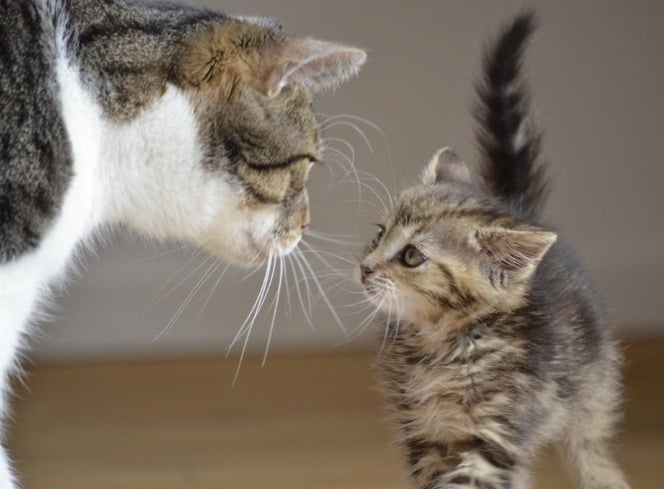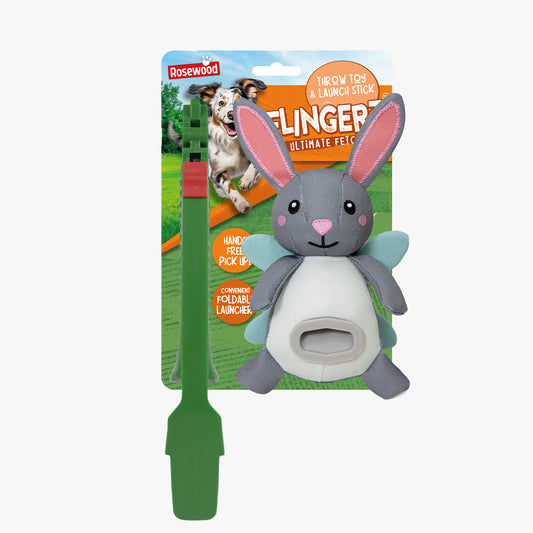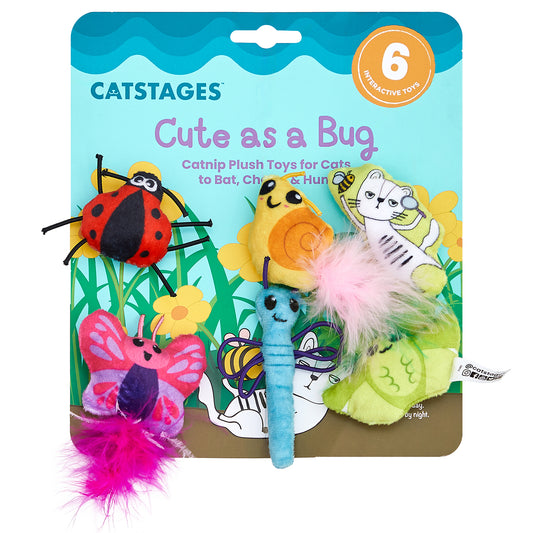Bringing a new kitten into your home is such an exciting and joyful time. These tiny, curious creatures can bring immense happiness, but there’s also a few items which you need to get to prepare for their arrival. Whether you are a first-time cat owner or adding another feline friend to your family, having a comprehensive checklist for kittens is essential. Our Pet Experts have put together this guide to walk you through everything you need for your kitten, covering all the kitten essentials to ensure a smooth transition into your home.
10 Things You Need To Know Before Bringing Home A Kitten
1. Preparing Your Home: A Safe Haven
Before your kitten arrives, it's crucial to kitten-proof your home. Kittens are naturally curious and love to explore their surroundings. To prevent any accidents, remove or secure items that could be hazardous.
Kitten Essentials for Home Safety:
- Secure Loose Wires: Kittens love to chew on things, so make sure to secure electrical cords and wires.
- Block Small Spaces: Use barriers to block off small gaps where kittens might get stuck.
- Remove Toxic Plants: Many common houseplants are toxic to cats. Try to keep any house plants out of your kittens way. If you’re not sure on what plants cats are allergic to check out our blog on what plants are poisonous to cats.
2. Comfortable Living Space

Your kitten needs a cosy and safe space to rest, getting them a cosy bed or a blanket to curl up in whilst they nap will help them to settle into their new home.
Things You Need for a Kitten’s Living Space:
- Cat Bed: Choose a soft, comfortable bed where your kitten can sleep and relax.
- Blankets: Soft blankets can provide extra warmth and comfort.
Here are Lords & Labradors we specialise in luxury pet bedding, from gorgeous high wall beds to cocoon your kitten to sleep to cosy blankets to cuddle up in. Shop now
3. Feeding Essentials

A well-balanced diet is crucial for your kitten's growth and health. Investing in the right feeding supplies is a must.
Feeding Essentials for a New Kitten:
- High-Quality Kitten Food: Opt for food specifically formulated for kittens, as they have different nutritional needs compared to adult cats. We particularly love the Carnilove cat foods, they contain 70% fresh meat and are grain and potato free so you know you’re feeding your kitten the best.
- Food and Water Bowls: These are an essential, it may be a little bit of trial and error to find what suits your kitten as cats can be fussy. Some cats prefer a saucer whereas others prefer a bowl, some cats even prefer a water fountain to drink from.
4. Litter Training
Litter training your kitten is one of the first tasks you'll need to undertake. The right litter supplies can make this process easier.
Kitten Litter Training Checklist:
- Litter Tray: A low-sided tray is ideal for kittens to easily access.
- Litter: Clumping litter is often preferred, but ensure it's safe for kittens.
- Litter Scoop: For easy cleaning and maintenance.
Not a fan of the look of a litter tray? Our cat washrooms are designed to hide your cat’s litter tray as well as give them a little bit of privacy. They come in two colours, white and grey, and are designed to look like they are part of your home.

5. Grooming Supplies
Regular grooming is essential to keep your kitten healthy and looking their best. Start grooming your kitten early to get them accustomed to the routine. Depending on your kitten’s fur type, a brush or comb will help keep their coat smooth and free of tangles.
6. Health and Wellness
Keeping your kitten healthy involves regular vet care and some essential health supplies at home.
Health Essentials for Your Kitten:
- Vet Visits: Schedule your first vet appointment soon after bringing your kitten home.
- Vaccinations and Medications: Follow your vet’s advice on necessary vaccinations and medications.
- Flea and Tick Prevention: Discuss with your vet the best options for flea and tick prevention.
7. Playtime and Exercise

Kittens are full of energy and need plenty of playtime to stay happy and healthy. Make sure you have a range of toys and activities to keep them entertained.
Playtime Essentials for a New Kitten:
- Interactive Toys: Toys like feather wands and laser pointers can keep your kitten active and engaged. We particularly love the Catit circuits, there’s lots of additions you can make to the circuit to keep it fun for your kitten.
- Scratching Posts: These help kittens satisfy their natural scratching instincts while saving your furniture.
- Cat Trees: Multi-level cat trees offer climbing and perching opportunities. Getting a larger cat tree for them to climb as well as scratch will also fulfil your cat’s desire to be up high. Check out our range of cat trees here.
8. Socialisation and Training
Early socialisation and training can help your kitten grow into a well-behaved and confident cat. Spend time interacting with your kitten to build trust and companionship.
Socialisation and Training Tips:
- Positive Reinforcement: Use treats and praise to reward good behaviour.
- Handling: Gently handle your kitten regularly to get them used to being touched and held.
- Visitors: It’s a good idea to get your kitten used to you having people over, especially if you have a busy household.
9. Travel Essentials
If you plan to travel with your kitten, having the right supplies can make the journey more comfortable for both of you.
Travel Essentials for Kittens:
- Cat Carrier: A secure, comfortable carrier is essential for trips to the vet or any travel. We love the Cabrio Cat Carrier for transporting our cats.
- Travel Bowls: Collapsible bowls are convenient for food and water on the go, especially if you’ve got a long journey home with your cat.
10. Identification and Safety
Ensuring your kitten's safety is paramount. Proper identification can help in case your kitten gets lost.
Identification Essentials:
- Collar and ID Tag: A breakaway collar with an ID tag can help identify your kitten if they wander off.
- Microchipping: It’s now a legal requirement here in the UK for all cats to be microchipped by the time they are 5 months old and there are fines if your cat is found without a microchip. So it’s a good idea to get your kitten microchipped fairly quickly after you bring them home.
Conclusion
Bringing home a new kitten is a delightful experience, but it requires preparation and the right supplies to ensure your pet’s well-being. By following this comprehensive kitten checklist, you can create a safe, comfortable, and loving environment for your new furry friend. Remember, the initial investment in these kitten essentials will pay off in the form of a healthy, happy, and well-adjusted cat. Welcome to the wonderful world of pet kittens!
For more advice on kitten care and to shop for high-quality kitten products, shop our cat emporium here.


